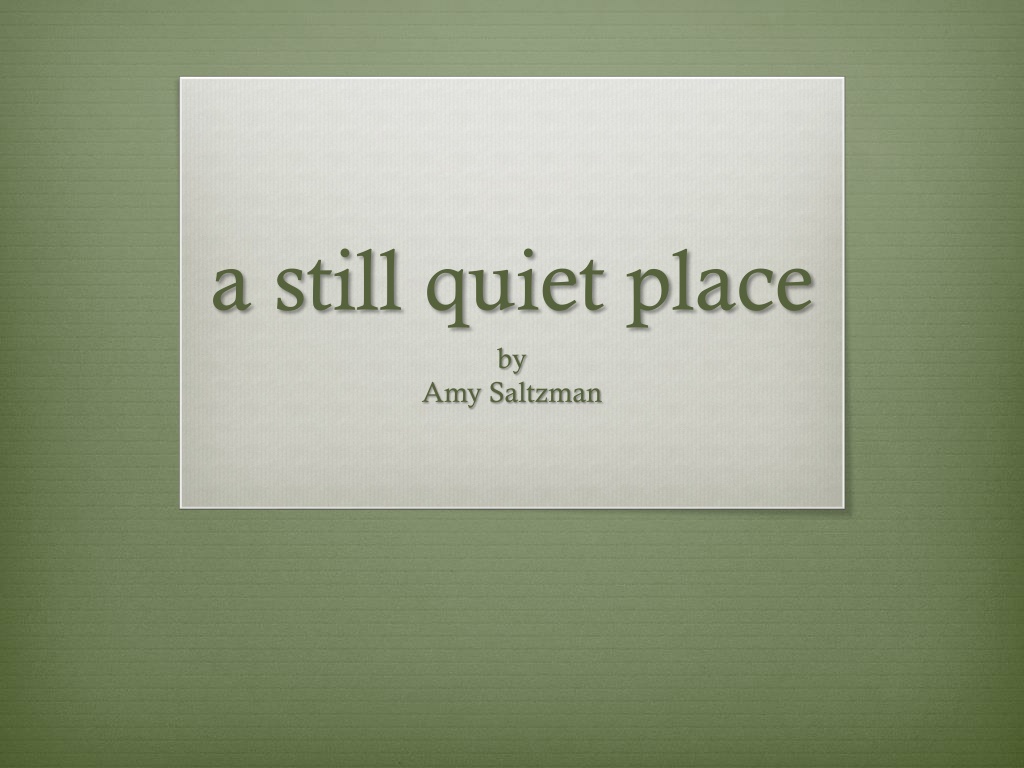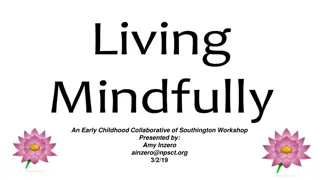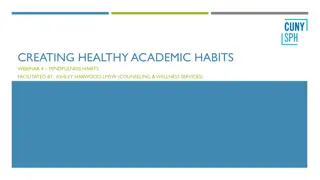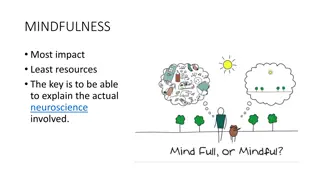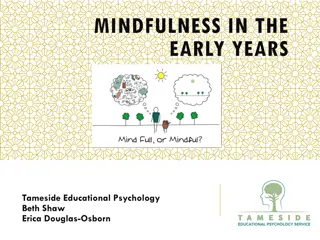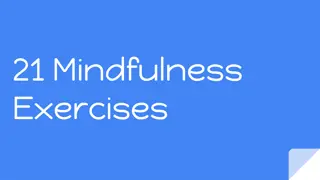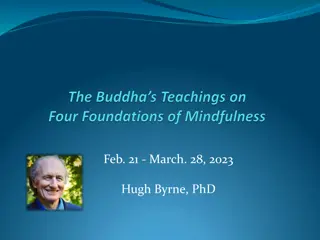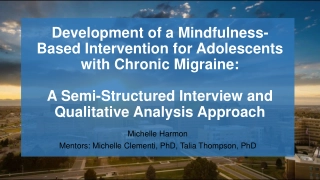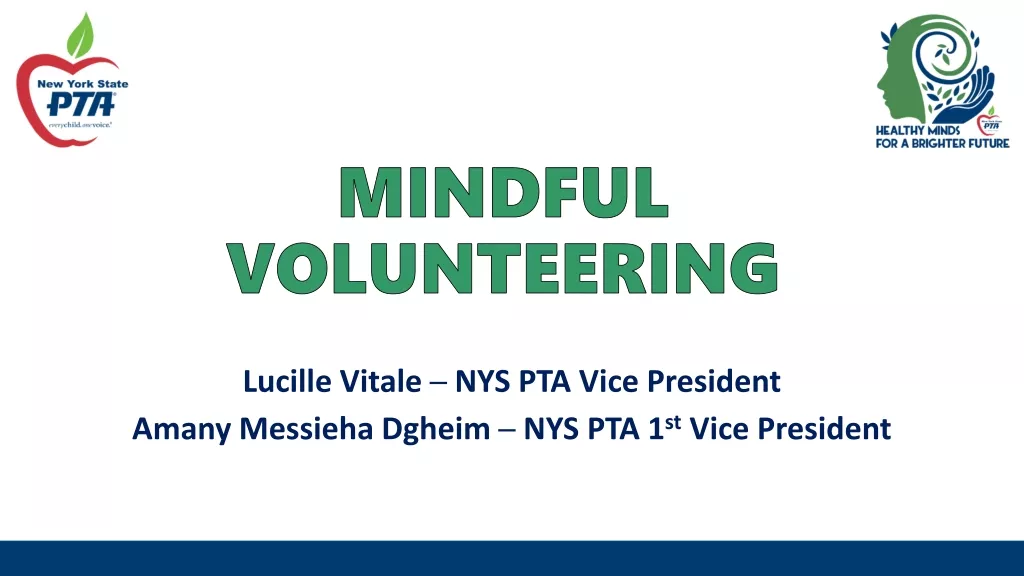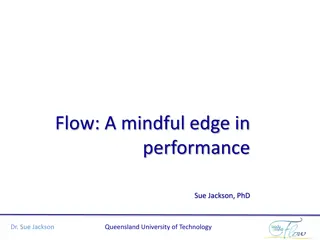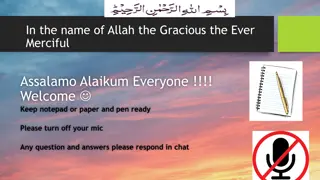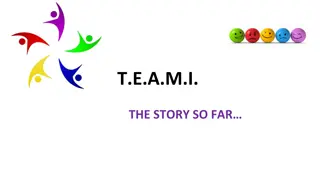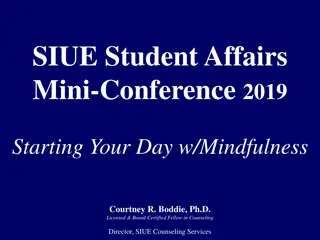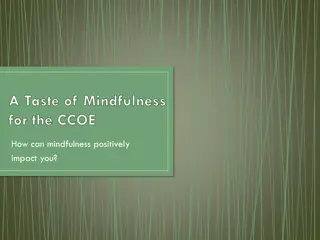Teaching Mindfulness to Children: A Comprehensive Guide by Amy Saltzman
In "A Still Quiet Place," Amy Saltzman explores the benefits of mindfulness for children, emphasizing the positive impact it can have on their daily lives. The book discusses the importance of personal mindfulness practice before teaching mindfulness to others and outlines qualifications for effective teaching. Through mindfulness, individuals can positively influence their brain's composition, enhancing various cognitive functions and emotional intelligence. Saltzman highlights the value of responding to emotions with kindness and compassion rather than trying to control them, promoting a more mindful approach to thoughts and feelings.
Download Presentation

Please find below an Image/Link to download the presentation.
The content on the website is provided AS IS for your information and personal use only. It may not be sold, licensed, or shared on other websites without obtaining consent from the author. Download presentation by click this link. If you encounter any issues during the download, it is possible that the publisher has removed the file from their server.
E N D
Presentation Transcript
a still quiet place by Amy Saltzman
Mindfulness is paying attention here and now, with kindness and curiosity, and then choosing your behavior
Major theme: Children can be taught to be mindful and it will have a positive impact upon their everyday lives
Subtheme 1: If you do not have a dedicated mindfulness practice in your own life, do not attempt to teach mindfulness Qualifications for teaching mindfulness Qualifications that DO require a personal mindfulness practice A daily mindfulness practice Five years of mindfulness experience Extensive mindfulness retreat experience (multiples five- to ten- day, or longer, retreats recommended) Extensive experience teaching yoga or some other movement practice within the context of mindfulness An ongoing affiliation with a community of mindfulness peers Qualifications that do NOT require a personal mindfulness practice An ability to translate mindfulness into ordinary, everyday language Professional experience working with youth Process-oriented group facilitation skills
Subtheme 2: Through practicing mindfulness, you can positively change your brain s composition Executive function Inhibitory control Working memory Cognitive flexibility Emotion Theory and Emotional Intelligence Social Development Aggression Impulsivity Perspective taking and moral behavior Interdependent Competencies
Subtheme 3: Its ok to have emotions we would consider to be negative; it s noticing your emotions and choosing to respond as opposed to reacting that s important. mindfulness is not about controlling thoughts and emotions. Mindfulness is meeting our thoughts and feelings with kindness and compassion; there is no need to control them. (p. 27)
Subtheme 4: The still and quiet place exists in the natural pauses in your breath.
Finding your Still Quiet Place Activity https://www.youtube.com/watch?v=aJq6pgfAxbA
Subtheme 5: We can influence the level of our suffering by choosing to embrace, rather than resist, the unpleasant situation
Mindfulness Activity: Holes and Different Streets
Course connection: Mindfulness is not analogous with the school system
School Implementation CSI Trained facilitators Supports beyond school Staff exhaustion pro and con Students
Course Connection: Mindfulness is about being, not doing
Lingering Questions Can you really learn mindfulness from a mass marketed book? Can a secularized mindfulness practice be as effective as one that is rooted in tradition and spirituality? In terms of popular culture and popular consciousness, does mindfulness have staying power? Is mindfulness, indeed, a paradigm shift, or is it just a passing fad? Do the qualification espoused by the author and other mindfulness practitioners keep mindfulness from the very people who could most benefit? Is Saltzman, with all of her stringent qualifications and prerequisites for teaching mindfulness, in fact, keeping mindfulness as something exclusively for people who can afford it? Should we really being selling mindfulness? Does the cost of introducing a watered down version of mindfulness, as promoted by Saltzman, outweigh the benefits of introducing it in schools?
Concluding Mindfulness Activity
